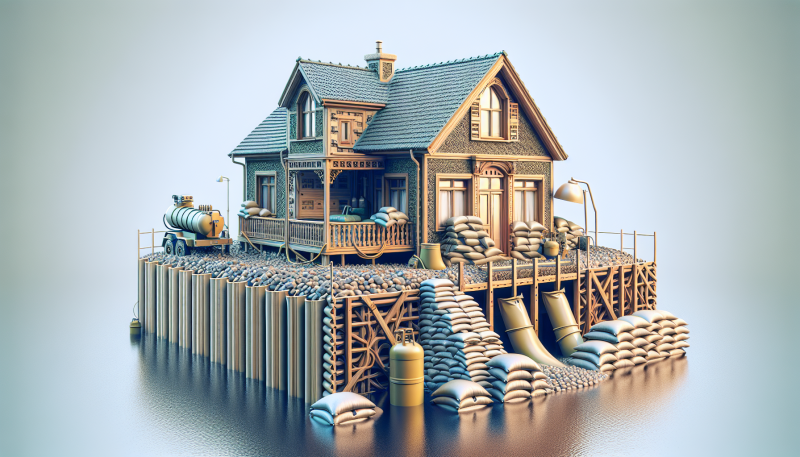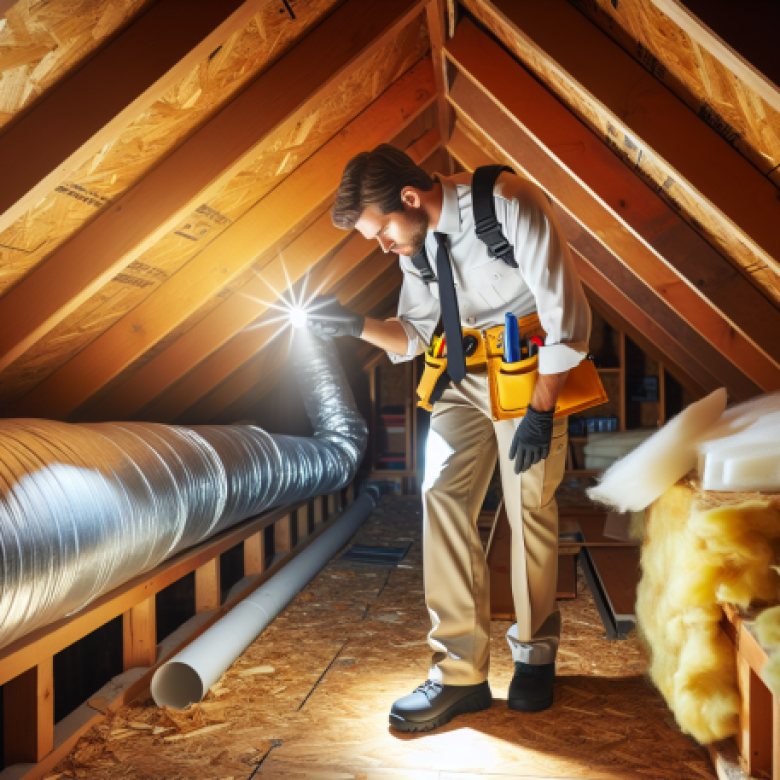Flood Damage: Preventative Measures—how prepared are you to protect your property from the devastating effects of flooding? At Projekt Restoration, we understand the critical importance of safeguarding your home or business from water damage. With over 16 years of experience in water, fire, and mold restoration, we are your go-to experts for comprehensive restoration solutions. But what can you do to prevent flood damage before it happens?
Preventative measures are essential in minimizing the impact of floods on your property. Simple steps like installing sump pumps, sealing foundation cracks, and maintaining proper drainage systems can make a significant difference. This article will delve into these strategies and more, providing you with actionable tips to protect your property from flood damage.
Ready to fortify your home or business against potential flooding? Let’s explore the expert-recommended preventative measures that can save you time, money, and stress. Dive into our detailed guide and arm yourself with the knowledge to keep your property safe and secure.
Understanding Flood Damage
Flood damage refers to the destruction caused by excessive water, impacting various aspects of a property. It can manifest as structural damage, affecting the foundation and walls, or electrical damage, compromising the wiring and appliances. Additionally, mold growth is a common consequence, posing health risks.
In the short term, flood damage can render properties uninhabitable, disrupt daily life, and lead to significant financial burdens. Long-term impacts include persistent mold issues, structural weakening, and ongoing health problems such as respiratory issues. These effects underscore the importance of timely intervention and restoration.
Statistics reveal the severity of flood damage. For instance, the National Flood Insurance Program reports that floods cause over $8 billion in damages annually in the U.S. Case studies, such as those from Cooper City water damage incidents, highlight the frequency and impact on communities.
To mitigate these risks, understanding the types and effects of flood damage is crucial. For more information on how to protect your property, consider consulting with experts in mold assessment and dehumidification.
Identifying Flood-Prone Areas
To determine if an area is prone to flooding, start by consulting flood maps and historical data. These resources provide valuable insights into past flood events and potential future risks. Local governments and agencies play a crucial role in disseminating this information. They often offer online tools and resources to help residents understand their flood risk.
Homeowners can take proactive steps to assess their flood risk. Begin by checking the elevation of your property and its proximity to water bodies. Additionally, consider the area’s drainage systems and how well they handle heavy rainfall. For a more detailed assessment, you can use tools like a flood risk calculator.
It’s also wise to consult with local authorities or a professional for a comprehensive evaluation. They can provide specific advice tailored to your property. If you live in a high-risk area, consider investing in flood insurance and implementing flood mitigation measures. For more information, you can reach out to experts through our contact page. Taking these steps can significantly reduce the impact of potential flooding on your home.
Structural Preventative Measures
Proper building design and materials play a crucial role in flood prevention. Utilizing elevated foundations can significantly reduce the risk of water damage. For instance, homes built on stilts or raised platforms are less likely to experience flooding. Additionally, installing flood barriers around the property can provide an extra layer of protection. These barriers can be temporary or permanent, depending on the area’s flood risk.
Waterproofing the building’s exterior is another effective measure. Applying sealants to walls and foundations can prevent water from seeping in. Moreover, using flood-resistant materials, such as concrete and pressure-treated wood, can enhance the structure’s durability.
Successful implementations of these measures have shown remarkable effectiveness. For example, homes in flood-prone areas with elevated foundations have reported significantly less damage during heavy rains. Similarly, properties with installed flood barriers have remained dry while neighboring buildings suffered.
For more information on flood prevention, visit our contact page. To assess your property’s flood risk, use our calculator. If you need assistance with water damage, check out our Weston water damage services.
Landscaping and Outdoor Measures
Proper landscaping can significantly mitigate flood risks. For instance, rain gardens absorb excess water, reducing runoff. Permeable pavements allow water to seep through, preventing pooling. Additionally, well-designed drainage systems play a crucial role. Regular maintenance, such as clearing debris, ensures they function effectively.
Incorporating flood-resistant plants and trees into your landscape is also beneficial. Species like bald cypress, red maple, and switchgrass thrive in wet conditions. These plants help absorb water and stabilize the soil.
For more information on flood prevention, consider consulting our experts. Visit our contact page. If you need assistance with water damage, check our Weston water damage services. Additionally, our Cooper City mold removal team is ready to help.
Indoor Preventative Measures
To protect your home’s interior from flood damage, start by sealing walls and floors with waterproof materials. This step prevents water from seeping in. Installing a sump pump in the basement can also help manage excess water. Ensure your electrical and plumbing systems are up to code. Faulty wiring and pipes can exacerbate flood damage. Regular maintenance checks are crucial.
Safeguard valuable items and documents by storing them in waterproof containers. Elevate these containers off the ground to avoid water contact. For added protection, consider using a safe deposit box for irreplaceable items.
For more detailed guidance, visit our contact page. If you need professional assistance, our Cooper City water damage services are available. Additionally, explore our reconstruction options to restore your home post-flood.
Emergency Preparedness Plans
An effective flood emergency plan includes several critical components. First, identify potential risks and establish clear evacuation routes. Ensure every family member knows these routes. Additionally, create a family communication plan. This plan should include contact information for all family members and a designated meeting spot.
Having an emergency kit is essential. Your kit should contain non-perishable food, water, medications, a flashlight, batteries, and important documents. It’s also wise to include a first-aid kit and hygiene products.
Lastly, practice your plan regularly. Familiarity with the plan can save precious time during an actual emergency. For more detailed guidance, visit our consulting page. If you need assistance with water damage or content cleaning, our experts are ready to help.
Insurance and Financial Protection
Flood insurance is crucial for safeguarding your property against unexpected water damage. It typically covers structural damage, electrical systems, and personal belongings. Choosing the right policy involves comparing different providers and understanding their coverage options. Look for policies that offer comprehensive protection and have a good reputation for customer service.
When selecting an insurance provider, consider their claim process and response time. It’s essential to read reviews and ask for recommendations. Additionally, ensure the policy covers both the building and its contents. This dual coverage is vital for complete financial protection.
Documenting your property and belongings is a critical step. Take clear photos and videos of each room, focusing on high-value items. Keep an inventory list with descriptions and purchase receipts. This documentation will streamline the claim process if you ever need to file one. For more information on protecting your property, visit our contact page or use our calculator to estimate potential damages.
Community and Government Initiatives
Community programs and government regulations play a crucial role in flood prevention. Local initiatives often include educational campaigns, infrastructure improvements, and emergency response training. For instance, some communities have successfully implemented flood barriers and improved drainage systems. These projects not only protect homes but also enhance public safety.
Individuals can get involved by participating in local meetings and volunteering for community projects. Engaging in these activities helps raise awareness and fosters a sense of responsibility. Moreover, residents can contribute by staying informed about local regulations and supporting policies that promote flood resilience.
For more information on how you can contribute, visit our contact page. Additionally, you can explore our Cooper City water damage services to understand the impact of effective flood prevention. By working together, communities and governments can significantly reduce the risks associated with flooding.
Technological Innovations in Flood Prevention
Recent advancements in flood prediction and prevention technologies have revolutionized how we approach flood management. Cutting-edge systems now utilize AI and machine learning to analyze weather patterns and predict potential flood events with remarkable accuracy. These technologies enable communities to prepare and respond more effectively, reducing the impact of floods.
Smart home devices and apps play a crucial role in flood monitoring. Homeowners can now install sensors that detect water levels and send real-time alerts to their smartphones. This immediate notification system allows for swift action, potentially saving valuable property and lives. Additionally, apps can provide updates on weather conditions and flood warnings, ensuring residents stay informed.
Innovative flood prevention products are also making a significant impact. For example, water barriers and flood gates can be deployed quickly to protect properties from rising waters. Another notable product is the permeable pavement, which allows water to seep through, reducing surface runoff and minimizing flood risks. These advancements not only enhance safety but also contribute to sustainable urban planning.
For more information on how to protect your home, visit our contact page or use our calculator to estimate potential flood damage costs.
Frequently Asked Questions (FAQs)
After a flood, the first steps are crucial. Begin by ensuring everyone’s safety and contacting emergency services if needed. Next, assess the damage and document it for insurance purposes. To determine if your home is at risk of flooding, check local flood maps and consult with experts. An emergency flood kit should include essentials like water, non-perishable food, medications, and important documents.
Sandbags can be effective in preventing minor flood damage, but they are not foolproof. Landscaping can indeed make a difference; proper grading and the use of native plants can help manage water flow. Reviewing and updating your flood emergency plan should be done annually or after any significant changes to your property.
Common mistakes include underestimating the risk and failing to prepare adequately. To find out if your insurance covers flood damage, review your policy or contact your insurer. Government grants and programs for flood prevention are available; check local and federal resources for information.
Upon receiving a flood warning, act immediately. Move to higher ground and follow local evacuation orders. For more detailed assistance, consider consulting with experts like Projekt Restoration. If you need help with water damage, visit Weston Water Damage or Hollywood Water Damage.





